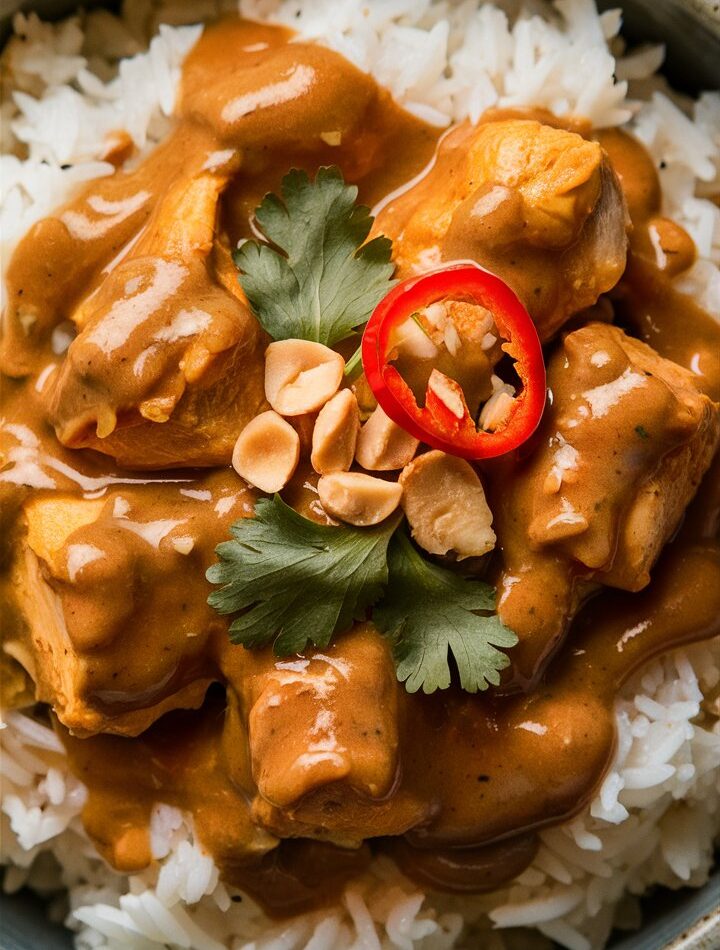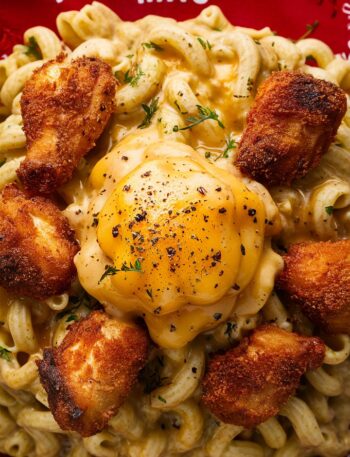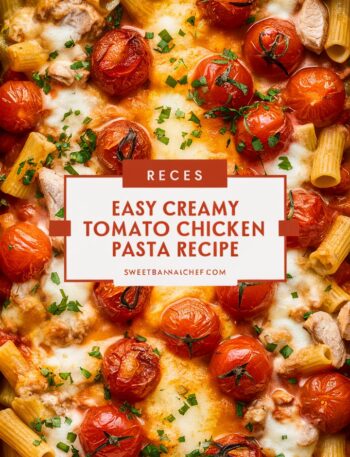Some recipes feel like old friends—comforting, reliable, and always welcome at the dinner table. Thai Peanut Chicken is one such dish. With its creamy peanut sauce, tender chicken pieces, and a perfect balance of sweet, savory, tangy, and spicy notes, this recipe delivers maximum flavor with minimal effort.
It’s a dish that borrows inspiration from the bold, balanced flavors of Thai cuisine while adapting to modern kitchens where quick, weeknight-friendly meals are in high demand. The best part? You don’t need complicated ingredients or advanced cooking skills to master it. In just 30 minutes, you’ll have a dish that tastes like it came from your favorite Thai takeout spot but is fresher, healthier, and entirely homemade.
In this comprehensive guide, we’ll explore everything you need to know about Thai Peanut Chicken—from its cultural inspirations to cooking tips, substitutions, serving suggestions, nutritional benefits, and expert FAQs. By the end, you’ll not only have a recipe but also the confidence and knowledge to make it your own.
The Cultural Inspiration Behind Peanut Chicken
While Thai Peanut Chicken isn’t an authentic dish you’d find on the streets of Bangkok, it is heavily inspired by the flavors that define Thai cuisine: balance, harmony, and freshness.
Peanuts are most famously associated with Thai satay—grilled skewers of chicken, beef, or pork served with a creamy peanut dipping sauce. That sauce embodies the five essential Thai flavor elements:
- Salty from soy sauce or fish sauce
- Sweet from palm sugar or honey
- Sour from lime juice or rice vinegar
- Spicy from chilies
- Umami from garlic, ginger, and protein
Thai Peanut Chicken adapts this concept into a skillet dinner, coating tender chicken pieces with a rich sauce instead of using it purely as a dip. It’s not strictly traditional, but it honors the Thai philosophy of balance while providing a quick, modern comfort food option.
Why This Recipe Works
There are countless peanut chicken recipes online, but this version stands out because it is:
- Fast and approachable – Ready in under 30 minutes with simple pantry ingredients.
- Flavor-forward – Creamy, nutty, tangy, and just spicy enough to keep things exciting.
- Versatile – Can be served with rice, noodles, or in lettuce wraps, and adapted for different proteins.
- Customizable – Adjust spice levels, swap in veggies, or make it gluten-free or low-carb.
- Meal-prep friendly – Stores well, reheats beautifully, and is perfect for lunches.
It’s the kind of recipe that proves homemade can be just as quick as takeout—without sacrificing taste or nutrition.
Ingredients Breakdown – What You’ll Need and Why
Chicken
- Boneless, skinless chicken breasts – Lean, mild, and quick-cooking.
- Chicken thighs – Juicier, more forgiving if slightly overcooked, and richer in flavor.
Peanut Sauce Base
- Peanut butter – The star of the show. Natural peanut butter works best for texture and balanced sweetness.
- Soy sauce or tamari – Brings saltiness and umami.
- Rice vinegar or lime juice – Adds brightness and acidity to cut through the richness.
- Honey or maple syrup – Balances the salt and sour with subtle sweetness.
- Chili garlic sauce or sriracha – Introduces a gentle heat and complexity.
- Garlic and ginger – Fresh aromatics that elevate the sauce.
- Water or coconut milk – Thins the sauce to a silky consistency.
Garnishes and Serving Essentials
- Chopped peanuts – For crunch and extra nuttiness.
- Fresh cilantro or green onions – Add color and freshness.
- Rice, noodles, or lettuce wraps – The canvas for your chicken masterpiece.
- Lime wedges – A final squeeze of citrus for balance.
Step-by-Step Cooking Instructions
- Prepare the chicken – Cut into bite-sized pieces, season lightly with salt and pepper.
- Sear the chicken – Heat oil in a skillet, cook chicken until golden and fully cooked (6–8 minutes). Set aside.
- Make the peanut sauce – In a bowl, whisk together peanut butter, soy sauce, lime juice, honey, chili garlic sauce, garlic, ginger, and water until smooth.
- Simmer the sauce – Pour into the skillet, cook over medium heat until slightly thickened (2–3 minutes).
- Combine chicken and sauce – Return chicken to the skillet, toss to coat, and simmer for another 2–3 minutes.
- Serve and garnish – Plate over rice, noodles, or lettuce wraps. Add peanuts, herbs, and lime.
Expert Tips for Success
- Use natural peanut butter for the best texture and balanced sweetness.
- Thin the sauce gradually—start with less water, add more as needed.
- For extra depth, marinate the chicken in soy sauce and garlic for 15 minutes before cooking.
- If meal-prepping, store sauce and chicken separately for best results.
- Adjust spice level to your audience—start mild, then add heat.
Variations and Customization Ideas
- Vegetarian/Vegan – Replace chicken with tofu or chickpeas.
- Low-carb – Serve with cauliflower rice or zucchini noodles.
- Gluten-free – Use tamari instead of soy sauce.
- Creamier – Add a splash of coconut milk to the sauce.
- Veggie-packed – Add bell peppers, snap peas, spinach, or carrots for color and crunch.
Nutritional Benefits
Thai Peanut Chicken isn’t just delicious—it’s nourishing:
- High protein from chicken and peanut butter.
- Healthy fats from peanuts.
- Naturally dairy-free.
- Adaptable for low-carb or gluten-free diets.
(Here you can include a sample nutrition breakdown per serving: ~400–450 calories, 30g protein, 20g healthy fats, etc., depending on serving size.)
Serving Suggestions
- With steamed jasmine rice for classic comfort.
- Over rice noodles for a slurp-worthy meal.
- In lettuce wraps for a lighter, crunchy option.
- Paired with stir-fried vegetables or steamed bok choy.
Storage and Reheating
- Fridge – Store in an airtight container for up to 4 days.
- Reheat – Warm gently in a skillet with a splash of water.
- Freeze – Store chicken and sauce separately for up to 2 months.
Common Mistakes to Avoid
- Overcooking the chicken – leads to dryness.
- Using overly sweet peanut butter – makes the sauce cloying.
- Forgetting acid (lime/vinegar) – leaves sauce flat and heavy.
- Adding all water at once – can make sauce too thin.
Frequently Asked Questions
Q: Can I make this ahead of time?
Yes, it reheats beautifully and is perfect for meal prep.
Q: Is it very spicy?
Not unless you want it to be! You control the heat with chili sauce.
Q: Can I use other proteins?
Absolutely. Shrimp, beef strips, tofu, or even chickpeas work great.
Q: Can I make it nut-free?
Yes—swap peanut butter for almond or sunflower seed butter.
Q: Can I double the sauce?
Definitely. It’s so versatile you’ll want extra for veggies or noodles.
Conclusion – Why Thai Peanut Chicken Belongs in Your Recipe Rotation
Thai Peanut Chicken is more than a quick dinner. It’s proof that weeknight cooking can be exciting, flavorful, and nourishing all at once. With its creamy peanut sauce, balanced flavors, and endless customization options, it’s a recipe you’ll turn to again and again. Whether served over rice, noodles, or in crisp lettuce wraps, it’s a dish that never fails to impress.
So grab your skillet, a jar of peanut butter, and a squeeze of lime—your new favorite dinner is just 30 minutes away.




